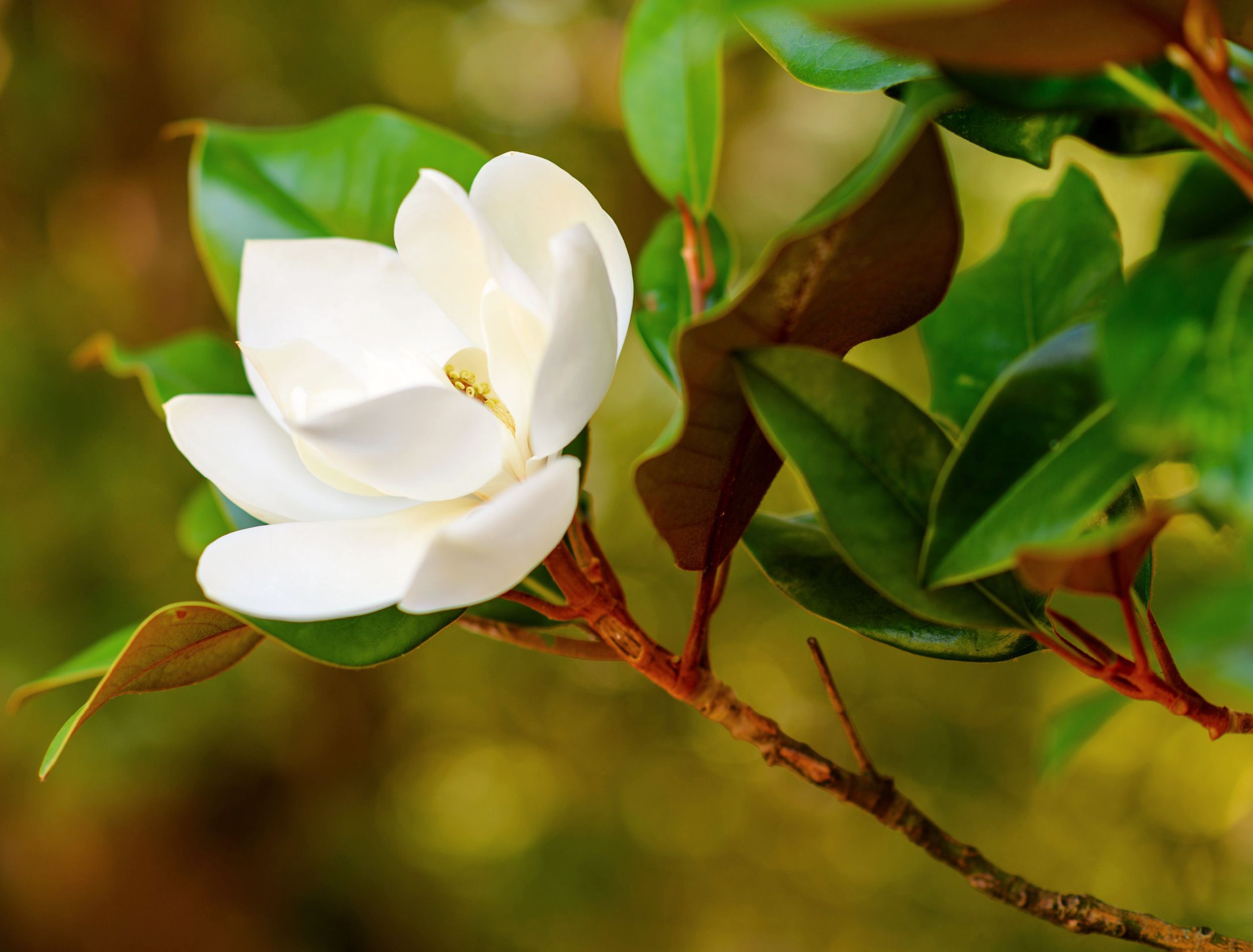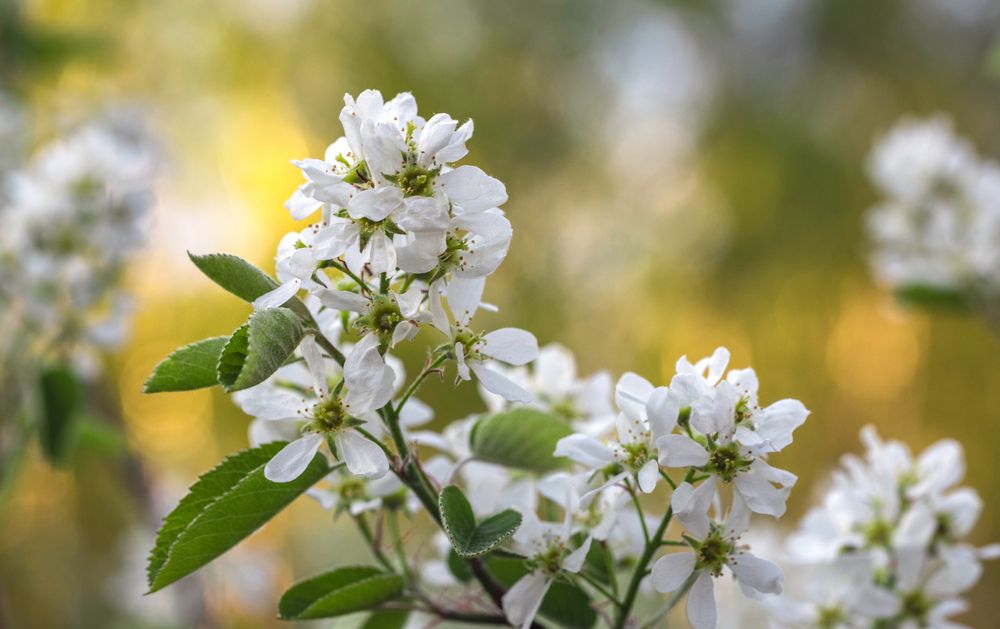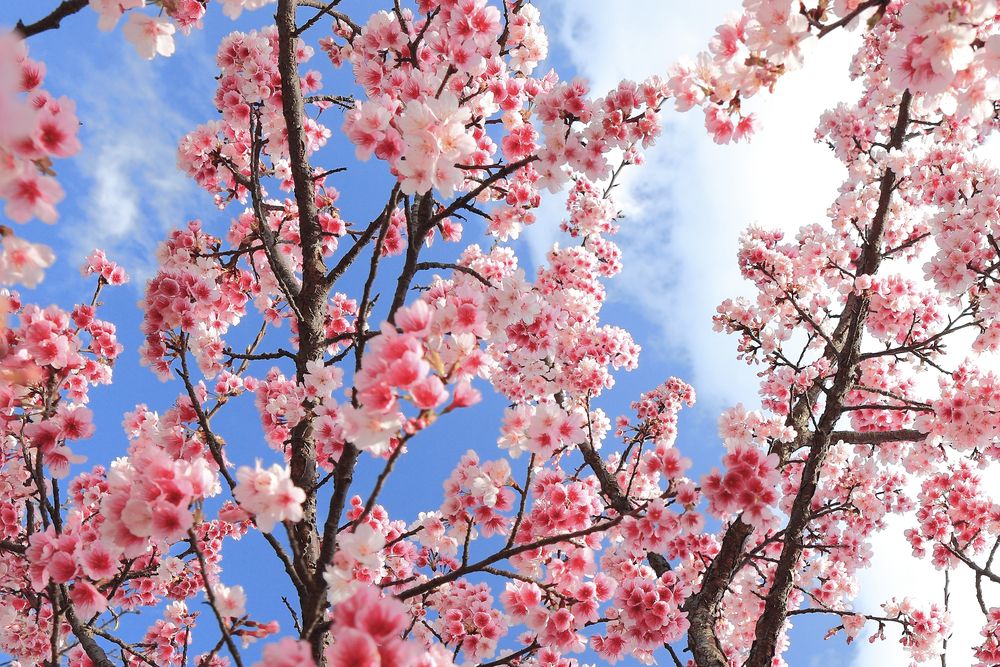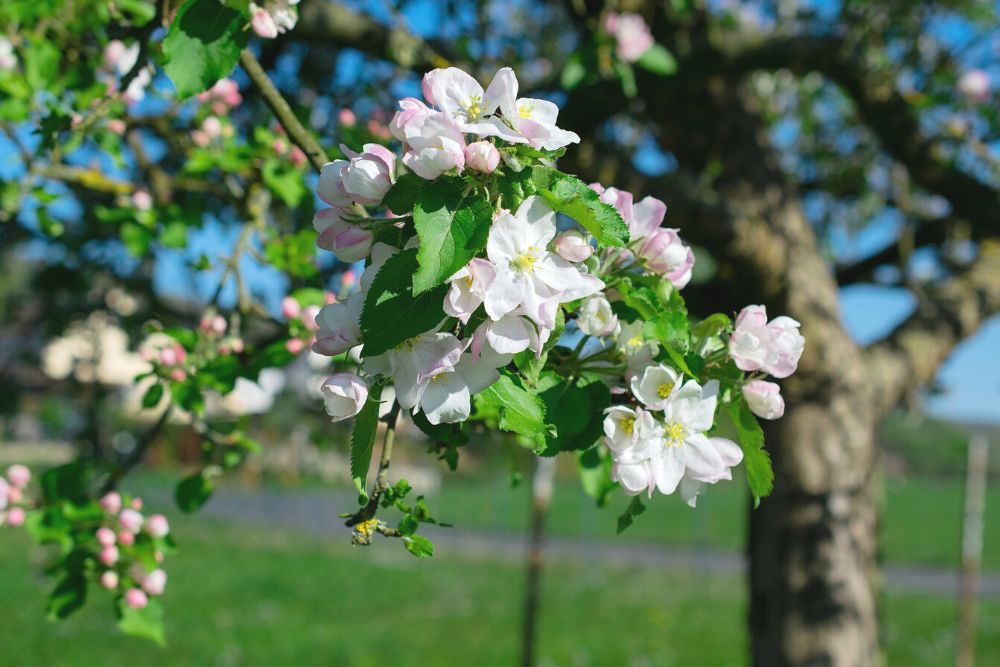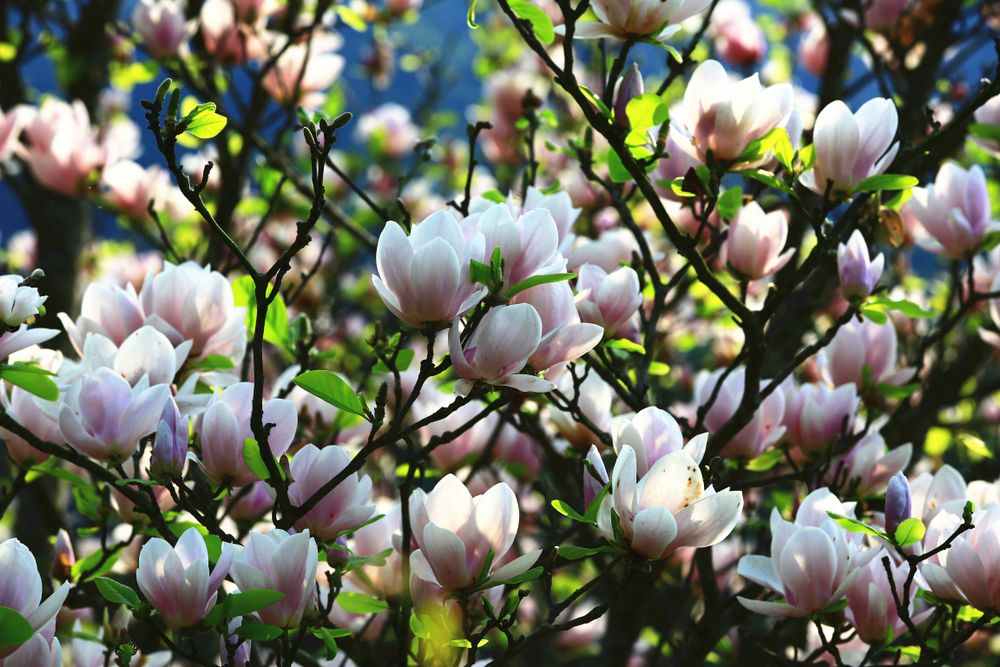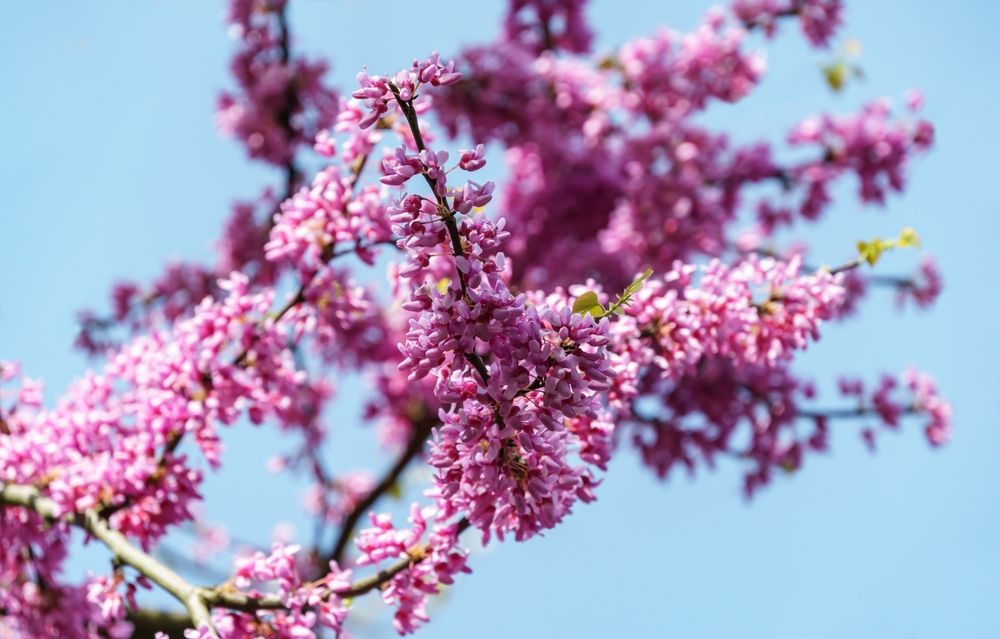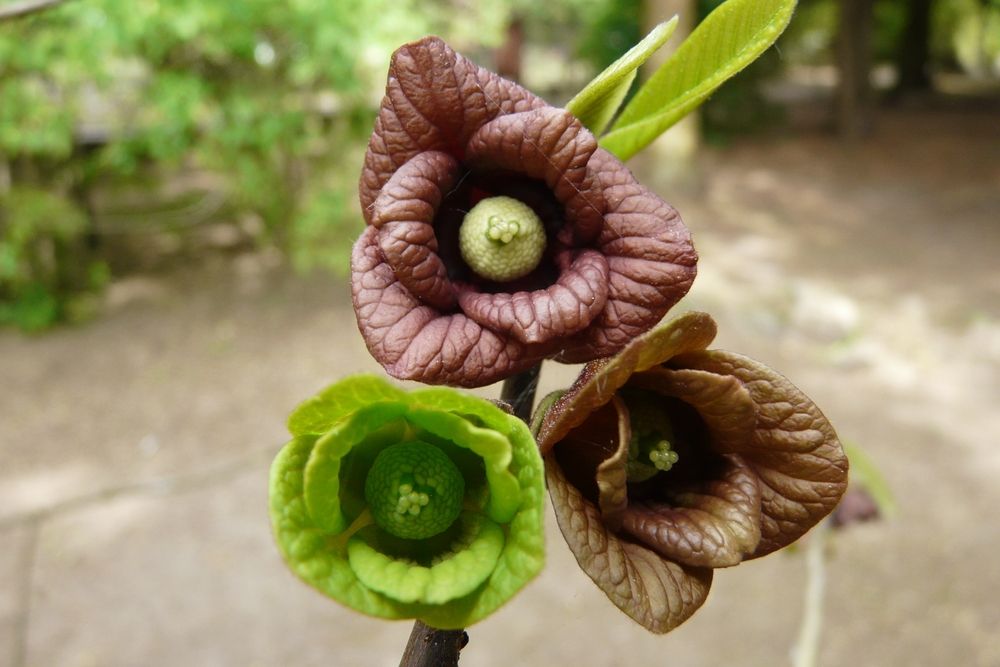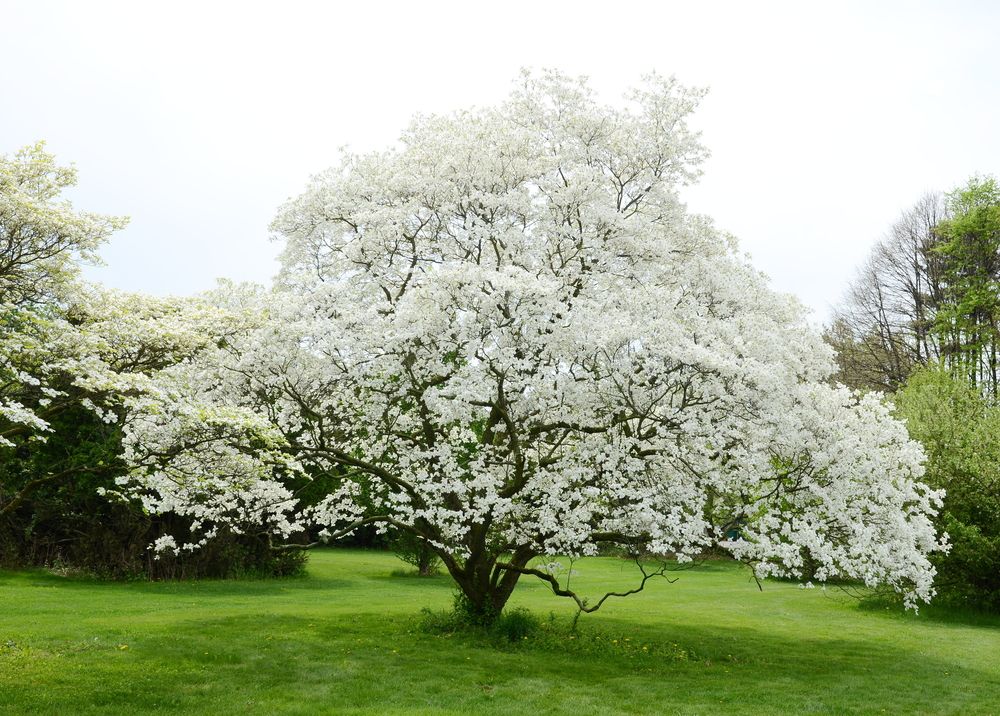If you want to fill your garden with beauty and color, add flowering trees! Many of these stunning trees come alive in the springtime with vibrant flowers in shades of purple, pink, white, and yellow. Growing a few flowering varieties adds bountiful rustic charm to your outdoor space and attracts birds, bees, and other beneficial wildlife.
There are plenty of options, whether you're looking for trees that flower heavily or provide subtle pops of color throughout the year. Explore this guide to seven types of flowering trees that are perfect for bringing life to your landscape.
Shadblow Serviceberry
Image credits: Julija Kumpinovica via Shutterstock
The shadblow serviceberry is an attractive, early flowering tree. In springtime, it blooms with showy white flowers that fill the air with a subtle fragrance. As summer arrives and the flowers disappear, this hardy tree's foliage displays lush and green. Come fall, its vibrant foliage turns shades of yellow, orange, and red, adding seasonal interest.
Additionally, the shadblow serviceberry's red fruits attract wildlife, making it even more appealing! Hardy in zones 4 to 8, the tree can grow up to 30 feet tall.
Yoshino Cherry
Image credits: JERRY_WANG via Shutterstock
The Yoshino cherry has cascading white-pink blossoms that give off a gentle almond scent, creating an idyllic atmosphere in your yard. This tree features a distinctive branch structure and dark green leaves that will draw admiration and envy from your family and neighbors.
These trees are typically hardy in zones 5 to 8 and tolerate some drought. When mature, a Yoshino cherry tree can reach up to 50 feet tall, making it a perfect focal point in your yard or garden.
Flowering Crabapple
Image credits: Aixklusiv via Pixabay
The crabapple is small, so it's ideal for both small yards and large properties. Not only does the crabapple provide aesthetic appeal, but it also provides valuable food and shelter for local wildlife.
This tree produces an abundance of delicate-looking white or pink flower clusters in the springtime. These flowers are highly fragrant, making them incredibly attractive to these beneficial creatures like bees and birds. In late summer, these blooms develop into small apples that can be as small as marbles and up to 2 inches in diameter.
The crabapple tree can thrive in many landscape settings, from large and wild areas to suburban gardens, and is suitable for zones 3 to 9. A mature tree is usually between 6 and 35 feet in height --the perfect size for naturalizing a garden or yard without taking up too much space.
Southern Magnolia
Image credits: happykamill via Shutterstock
With large, creamy white, and fragrant flowers that bloom in late spring and early summer, the southern magnolia will infuse your landscape with enchanting beauty. Its shiny green leaves have a reddish undertone, adding even more visual appeal. This evergreen grows up to 80 feet tall and provides a friendly habitat for birds, butterflies, and other local wildlife.
The southern magnolia thrives in zones 6 to 10.
Eastern Redbud
Image credits: Marinodenisenko via Shutterstock
If you're looking for a beautiful addition to your yard, look no further than the native Eastern redbud tree. These lovely flowering trees are hardy in zones 4 to 9 and can transform your landscape magnificently.
In April, they burst with rosy, pink blooms, followed by reddish-purple leaves that eventually turn dark green and yellow. The easter redbud only grows up to 30 feet, making it perfect for yards big and small.
Pawpaw
Image credits: Anna Krzywania via Shutterstock
Introducing the pawpaw tree: A North American native that will lend a tropical touch to your garden. This small tree has large leaves and produces purple flowers from April to May. Its popularity is partly due to its hardiness, as it tolerates shade and grows well in zones 5 to 9.
With its vibrant greenish-brown blooms turning into deep red later in the season, the pawpaw tree offers plenty of visual allure. As a bonus, the pawpaw fruit is a favorite food of many animals, including birds and squirrels.
White Dogwood
Image credits: Virunja via Shutterstock
The white dogwood's beauty is on display all year long, from its showy white blossoms in spring to its stunning red-purple foliage in fall and vibrant berries in winter. Not only is it a delightful sight that will make your landscape pop, but its fruit attracts songbirds you can enjoy watching from the comfort of your home. It's hardy enough for zones 5 to 9, so don't miss out on this four-season favorite!
Beauty in the Trees
Now that you know a little more about some of the best flowering trees to add to your landscape, what will you choose? No matter which tree you select, it will bring beauty and life to your outdoor space! Share this article with your friends and leave a comment below, letting everyone know which tree is your favorite.

